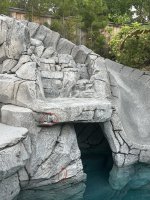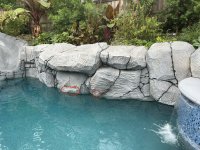- Mar 1, 2017
- 56
- Pool Size
- 25000
- Surface
- Plaster
- Chlorine
- Salt Water Generator
- SWG Type
- Pentair Intellichlor IC-40
My son wants to switch out his trichlor based tablet feeder for a SWG after dealing with CYA levels that are now out of control. The pool is just over one year old. When he called his pool builder and inquired about making the switch, the builder replied:
"Don't do it. You'll be sorry. Everything will turn white and start delaminating the rocks."
Now, this same contractor built my pool 12 years ago (also with a trichlor feeder) and warned me not to switch to a salt system - again with the same warnings:
"Your plaster will delaminate and I will not honor the warranty if you switch to a salt system. Salt gets into crevices and expands, which causes cracks and delamination."
I made the switch anyway and my pool looks great after 12 years.
So if I may ask you pool professionals: is adding a salt system to a pool with (admittedly) a huge number of faux (concrete painted) rocks and water slide, grotto, etc. going to destroy them as claimed by the builder? I've added a couple of pics if that helps, and my son has outlined areas where calcium or efflorescence is already causing noticeable issues.
Many thanks.
MB
"Don't do it. You'll be sorry. Everything will turn white and start delaminating the rocks."
Now, this same contractor built my pool 12 years ago (also with a trichlor feeder) and warned me not to switch to a salt system - again with the same warnings:
"Your plaster will delaminate and I will not honor the warranty if you switch to a salt system. Salt gets into crevices and expands, which causes cracks and delamination."
I made the switch anyway and my pool looks great after 12 years.
So if I may ask you pool professionals: is adding a salt system to a pool with (admittedly) a huge number of faux (concrete painted) rocks and water slide, grotto, etc. going to destroy them as claimed by the builder? I've added a couple of pics if that helps, and my son has outlined areas where calcium or efflorescence is already causing noticeable issues.
Many thanks.
MB



